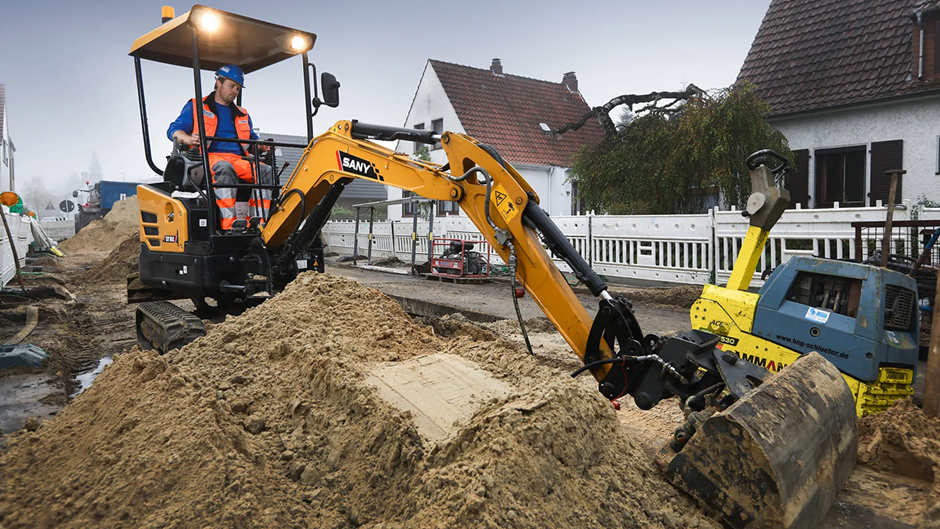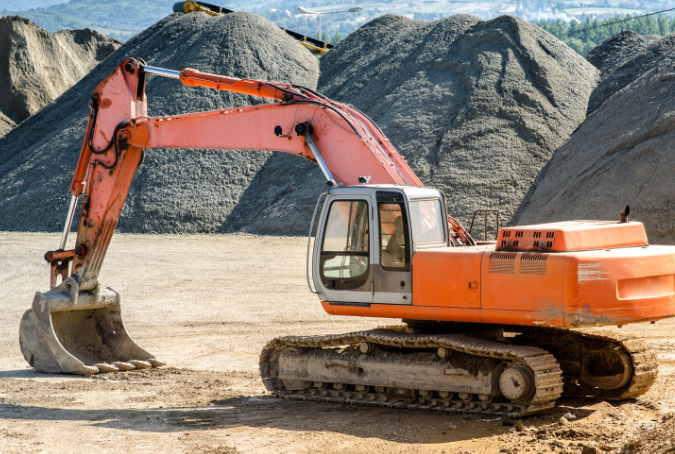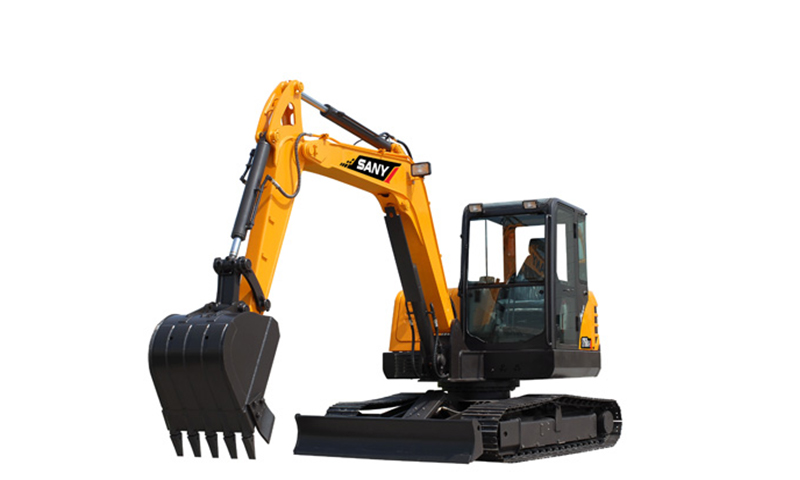How to Load a Mini Excavator on a Trailer: Complete 2025 Loading Guide
This guide explains how to load a mini excavator on a trailer, outlining key preparations, operating steps, and safety tips to help you complete the process efficiently and securely.
In municipal maintenance, small infrastructure projects, and similar scenarios, mini excavators are commonly used, and safely loading them onto a trailer is crucial to ensure transport safety and prevent equipment damage. Many operators, due to insufficient preparation or improper steps, risk equipment scratches, trailer overloading, or even safety incidents. Whether you are an experienced operator or handling this task for the first time, following proper procedures greatly improves efficiency and safety. This guide breaks down every step of how to load a mini excavator on a trailer, while also sharing practical tips for transport and unloading.

How to Load a Mini Excavator on a Trailer?
How to load an excavator on a trailer? Loading a mini excavator onto a trailer is not as simple as just “driving it on”; it requires pre-planning, weight calculation, and meticulous operation to avoid risks. Below is a detailed, step-by-step process for safe and effective loading:
1. Determine Machine and Attachment Weight
The first task is to confirm the total weight of the mini excavator and any attachments (such as buckets, breakers, augers, etc.). Overloading the trailer is a major cause of tire blowouts, frame deformation, and even road accidents, so it’s critical to avoid it.
Check the operator's manual: The manual will specify the “operating weight” (basic weight without attachments) and the “transport weight” (weight with standard attachments). This provides the most accurate weight reference. For example, SANY excavator equipment clearly marks the “operating weight.”
Weigh the individual attachments: The weight of different attachments varies greatly. For instance, a 12-inch bucket weighs around 45–90 kg, while a breaker could weigh 100–200 kg. Each must be calculated and added to the total weight to avoid missing any components that might cause overloading. (This is an example; actual weights should be determined based on the specific equipment.)
Use a scale to verify: If possible, drive the equipment and attachments onto a weighbridge to get the actual total weight, ensuring it matches the trailer’s rated capacity.
2. Choose the Right Vehicle and Trailer
The choice of vehicle and trailer directly affects loading and transportation safety. This decision should take into account the total weight, dimensions, and other compatibility factors:
Trailer weight capacity: Choose a trailer with a rated capacity that’s 20%-30% higher than the total equipment weight. For example, a 3-ton mini excavator should be loaded onto a trailer rated for at least 3.6–3.9 tons to allow for a safety margin.
Trailer type: Flatbed trailers are the most common choice. If the equipment has long attachments (such as an extended arm), consider using a flatbed with guardrails or an adjustable length. Avoid using a trailer with low clearance, as this could result in the excavator chassis scraping against the trailer edges.
Vehicle towing power: The towing vehicle (e.g., pickup truck or commercial vehicle) must have sufficient towing capacity to ensure stability during acceleration and climbing. Also, ensure that the vehicle’s towing qualifications are compatible with the trailer’s weight.
3. Prepare for Loading
Preparation is key to safe operations. Each step must be confirmed to ensure both the equipment, trailer, and site conditions are ready:
Check the equipment: Start the mini excavator and test the driving, steering, and bucket functions. Inspect the tire pressure or track tension (for tracked models), and check for any oil leaks, unusual noises, or faults. Remove any loose tools or attachments to avoid dropping them during loading.
Prepare the trailer: Clear any debris or oil stains from the trailer surface to ensure it is flat. Check that the trailer’s stabilizers (if present) are properly lowered and stable to prevent shaking during loading. Gather tie-down ropes, ratchets, and anti-slip mats, ensuring all accessories are free from wear or damage.
Plan the site: Choose a flat, firm surface for loading. Avoid slopes or soft ground. Set up warning markers (e.g., cones) around the trailer and ensure that the operator wears protective gear such as a safety helmet and anti-slip shoes.
4. Load the Mini Excavator
During the loading process, control speed and perform precise operations to prevent the equipment from shifting or scraping:
Adjust trailer and site angles: Park the trailer on level ground. If using ramps, ensure that the angle between the ramp and the ground does not exceed 15°, as steeper angles could make it harder for the excavator to climb or could cause it to slip. Also, check that the ramps are properly locked in place.
Drive the equipment onto the trailer slowly: Start the mini excavator and drive it slowly toward the ramp. The operator should carefully monitor the alignment between the equipment and the trailer, keeping the machine centered. For tracked excavators, ensure that both tracks are evenly placed on the ramp. For wheeled excavators, ensure that the tires are aligned with the center of the ramp to prevent uneven load distribution.
Control the position and stop: Once the excavator reaches about two-thirds of the trailer surface (or the recommended center of gravity, as per the operator's manual), stop the machine slowly. At this point, confirm that the entire weight of the excavator is on the trailer and not hanging off the edge. If necessary, make slight adjustments to center the machine and ensure stability.
5. Secure the Mini Excavator
Once the excavator is in position, it must be securely fastened to prevent shifting during transportation. This is a crucial step to ensure road safety:
Place anti-slip mats and chocks: Place rubber anti-slip mats under the excavator's tires or tracks to increase friction. Position metal chocks in front and behind the wheels (for wheeled models) or at both ends of the tracks (for tracked models). Secure the chocks to the trailer with bolts to prevent forward and backward movement of the excavator.
Cross-tie with wire ropes: Connect one end of each wire rope to the excavator’s designated tie-down points (typically on the chassis, not on the attachments). The other end should be secured to the trailer’s anchor points using a "cross tie" method (one set for front/back and one set for left/right). Use ratchets to tighten the wire ropes, ensuring they are secure. The ropes should have no slack, and they should not move noticeably when pulled by hand.
Inspect the secured state: After securing the excavator, walk around the trailer to double-check that the chocks have not moved, the wire ropes are intact with no signs of wear or breakage, the ratchets are locked, and the excavator’s parking brake is engaged to prevent it from sliding during transport.
Practical Tips to Transport and Unload a Mini Excavator Safely
After loading, monitoring during transportation, and proper unloading procedures are just as important and must be carried out in a standardized manner:
Regular Checks during Transport
Before departure, inspect carefully to ensure the wire ropes are not loose and the chocks are not displaced. During long-distance transport, stop periodically at service areas to check again. Also, monitor trailer tire pressure and brake conditions to prevent the securing devices from failing due to prolonged travel.
Control Driving Speed and Route
The towing vehicle should maintain a moderate or low speed and avoid sudden acceleration, braking, or sharp turns to prevent shifting due to inertia. Choose flat routes with lighter traffic whenever possible, and avoid bumpy roads or narrow passages to minimize trailer sway.
Reverse the Loading Procedure during Unloading
Park the trailer on a flat surface, deploy the stabilizing legs and ramps, and lock them. Start the excavator and slowly drive it down the ramps, keeping the machine steady and avoiding sudden braking that could cause the equipment to pitch forward. Once the excavator is fully off the trailer, retract the ramps and stabilizing legs, and clear the securing devices from the site.

Conclusion
How to load a mini excavator on a trailer? It is essential to strictly follow guidelines for weight calculation, equipment selection, secure operations, and transport monitoring, as safety depends on attention to detail. The same principles apply to a medium excavator, which is heavier and requires reinforced weight matching and securing based on this guide. Following these steps—adjusted as needed for a medium excavator—ensures both efficiency and safety, guaranteeing reliable transport.
FAQs
How to position a mini excavator on a trailer?
The key is to align the equipment’s center of gravity with that of the trailer:
After driving the excavator onto the trailer bed, check whether the machine is centered. For wheeled models, make sure the distance between the tires and the trailer edges is equal. For tracked models, ensure the tracks cover the load-bearing area of the trailer deck.
Generally, it’s recommended to park the excavator at about two-thirds of the trailer bed (measured from the ramp end) or follow the “optimal loading position” indicated in the trailer manual. This prevents the center of gravity from being too far forward or backward, which could cause the trailer to tilt.
How to unload a mini excavator on a trailer?
Unloading should follow the loading process in reverse:
1. Park the trailer on a flat, solid surface, lower and secure the stabilizer legs, then slowly unfold the ramps and lock the connection points.
2. Start the excavator, release the parking brake, and drive slowly toward the ramps. Maintain a steady speed and avoid sudden braking or steering.
3. After the equipment has completely exited the ramps and the tires or tracks are fully on the ground, retract the ramps and the trailer’s stabilizing legs to complete the unloading.
What size trailer to haul a mini excavator?
The trailer size must match the excavator’s length and width:
If the mini excavator body (excluding attachments) is about 3–4 meters long and 1.5–2 meters wide, a flatbed trailer with a length of 4.5–5 meters and a width of 2.2–2.5 meters is recommended.
If the excavator has an extended arm or large attachments, an additional 0.5–1 meter of length should be reserved to ensure the equipment is fully on the trailer without any overhang. (However, the exact trailer size should still be determined based on the specific machine.)
How much does a typical mini excavator weigh?
The operating weight of a mini excavator varies significantly depending on the model, attachments, and additional features. From a weight perspective, these machines are generally classified into three types:
1. Small mini excavators: Usually weigh between 2,000 and 10,000 pounds. They are suitable for indoor projects, small-scale digging, and tasks in highly restricted residential areas.
2. Medium mini excavators: Typically weigh between 10,000 and 18,000 pounds. They are versatile and can handle a wider range of applications, such as utility work and larger landscaping projects.
3. Large mini excavators: Models weighing more than 18,000 pounds offer greater power and capability and are designed for demanding tasks like heavy excavation and demolition, while still maintaining a certain level of maneuverability.
It’s important to note that the specific weight should always be confirmed according to the equipment manual.
Featured Products
Recommend Blogs

How Much Is a Mini Excavator? Exploring Prices and Operational Expenses
Compare mini excavator types, pricing factors, operating considerations, and whether buying or renting is smarter, helping you see how much is a mini excavator in 2025.

How to Operate a Mini Excavator: A Beginner’s Step by Step Safety Guide
This guide systematically breaks down the essential knowledge of how to operate a mini excavator, helping you work safely and complete tasks efficiently

How to Operate an Excavator: Essential Skills and Safety Tips
If you want to handle basic tasks like digging and backfilling with ease, mastering how to operate an excavator is essential. This guide will introduce the excavator’s key components, control methods, and common mistakes to avoid during operation.


